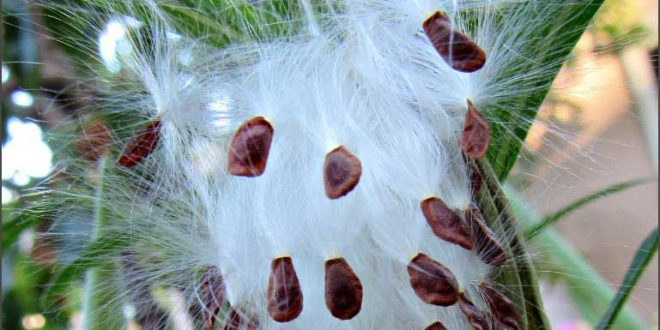Milkweed is the only food source for Monarch Caterpillars and are a mixture of the best nectaring plants for all butterflies. Natural Bridges State Park is just over the mountains in Santa Cruz and is a major destination of the Monarch butterflies.
Known to have some medicinal value as a cough expectorant, the plant’s milky white sap can also cause irritation if it comes into contact with your eyes. Asclepias contain cardiac glycosides that are poisonous to humans, but they pose the most danger to grazing animals.
Butterfly Milkweed, Butterfly Weed, Pleurisy Root
Asclepias tuberosa
Family: Apocynaceae (a-pos-ih-NAY-see-ee) (Info)
Genus: Asclepias (ass-KLE-pee-us) (Info)
Species: tuberosa (too-ber-OH-suh) (Info)
Category: Perennials
Height: 24-36 in. (60-90 cm)
Spacing: 15-18 in. (38-45 cm)
Hardiness:
USDA Zone 4a: to -34.4 °C (-30 °F) to USDA Zone 10b: to 1.7 °C (35 °F)
Sun Exposure: Full Sun
Danger: Parts of plant are poisonous if ingested
Bloom Color: Orange; Bright Yellow
Bloom Time: Mid Summer; Late Summer/Early Fall
Foliage: Herbaceous
Other details:
This plant is attractive to bees, butterflies and/or birds
Drought-tolerant; suitable for xeriscaping
Self-sows freely; deadhead if you do not want volunteer seedlings next season
Soil pH requirements:
5.6 to 6.0 (acidic)
6.1 to 6.5 (mildly acidic)
6.6 to 7.5 (neutral)
Patent Information: Non-patented
Propagation Methods:
By dividing rhizomes, tubers, corms or bulbs (including offsets)
From seed; direct sow outdoors in fall
From seed; winter sow in vented containers, coldframe or unheated greenhouse
From seed; stratify if sowing indoors
Seed Collecting:
Bag seedheads to capture ripening seed
Allow pods to dry on plant; break open to collect seeds
Properly cleaned, seed can be successfully stored
Read more: http://davesgarden.com/guides/pf/go/73/#ixzz3RNCR1mdi








